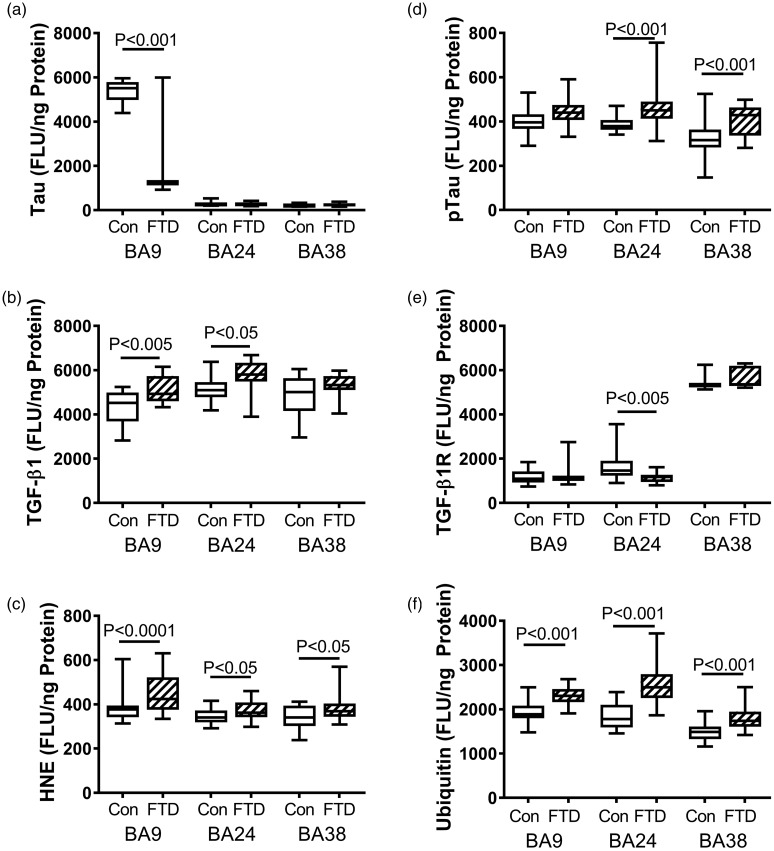Figure 1.
FTD-associated changes in markers of oxidative stress. Fresh-frozen postmortem microdissected control (n = 13) and FTD (n = 11) human brain samples from BA 8/9 (prefrontal), BA24 (anterior cingulate), and BA38 (temporal pole) were used to measure (a) Tau, (b) TGF-β1, (c) HNE, (d) pTau, (e) TGF-β1 receptor (TGF-β1R), and (f) ubiquitin by direct-binding ELISAs with results normalized to protein concentration. Levels of immunoreactivity were measured in arbitrary FLU. Box plots depict mean (horizontal bar), 95% confidence interval limits (upper and lower limits of the boxes), and range (stems). Data were analyzed by two-way ANOVA with the Tukey post hoc significance test. Significant between-group differences are indicated within the panels.
BA = Brodmann’s area; FLU = fluorescence light unit; FTD = frontotemporal lobar degeneration; HNE = 4-hydroxynonenal; pTau = phosphorylated Tau; TGF-β1 = transforming growth factor-beta 1.

